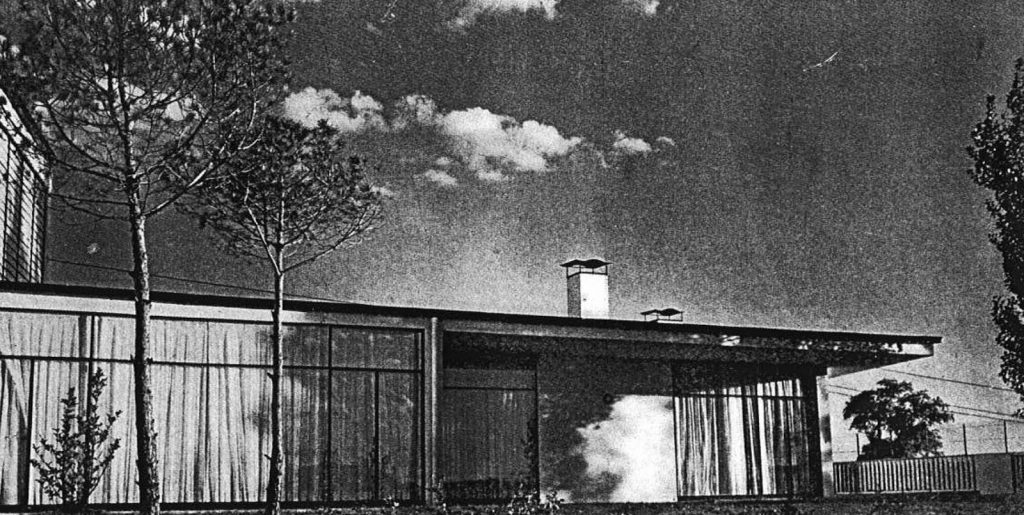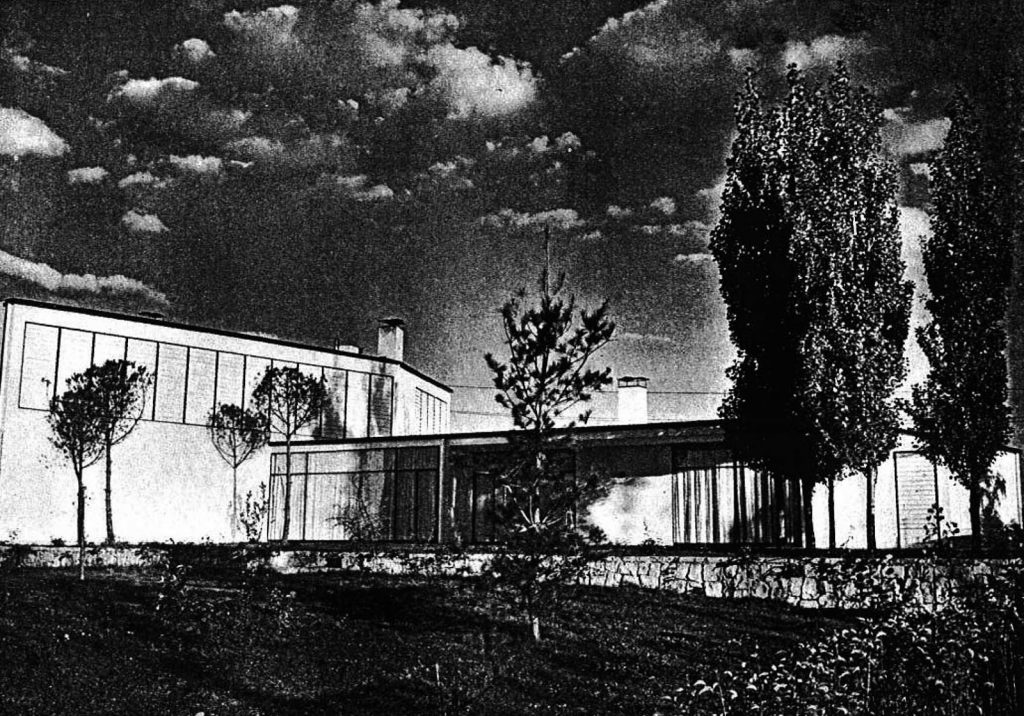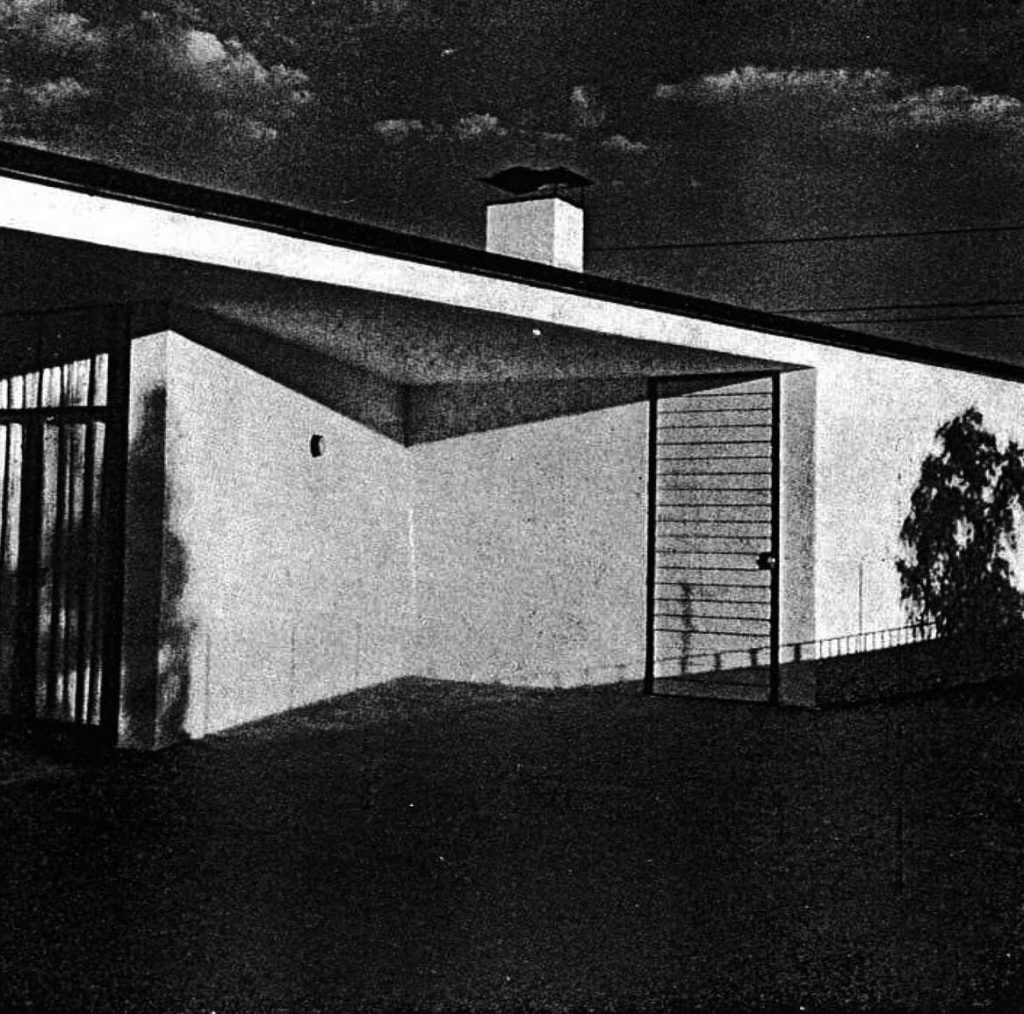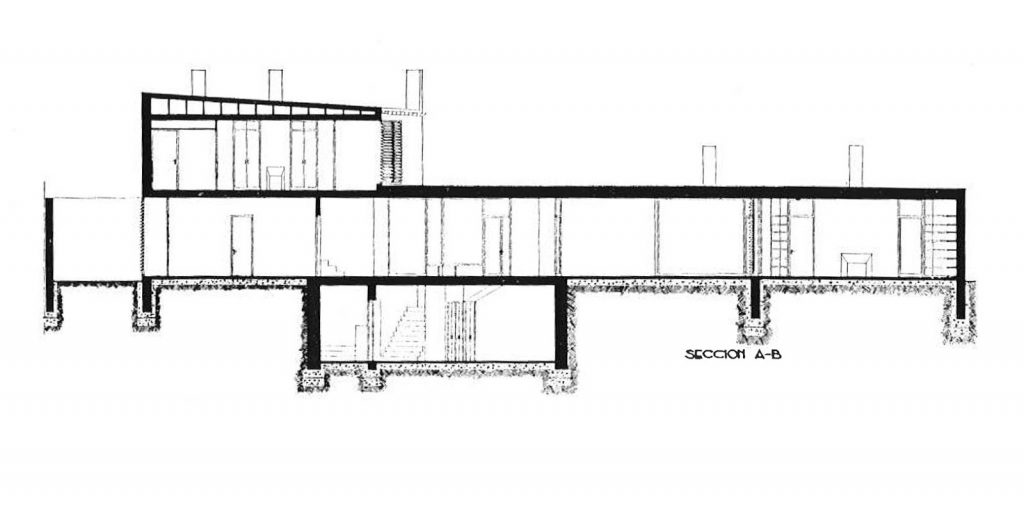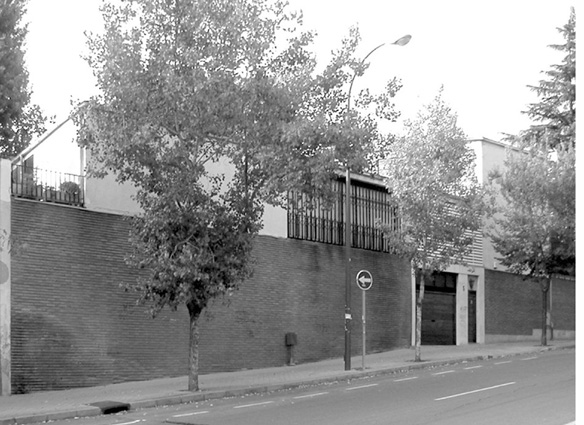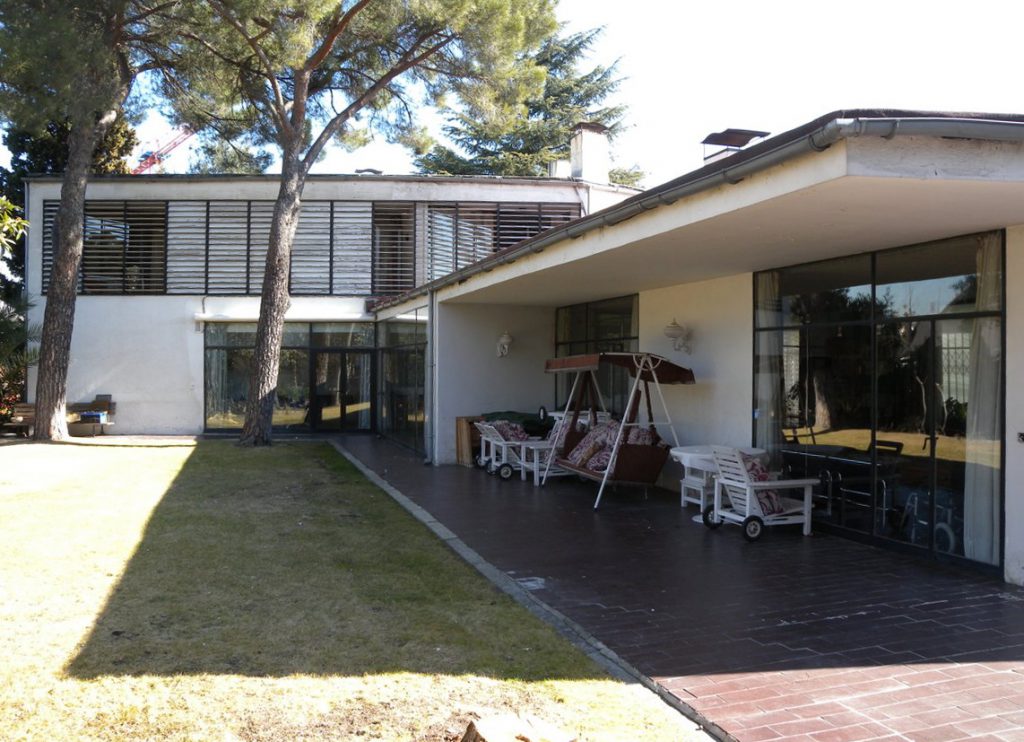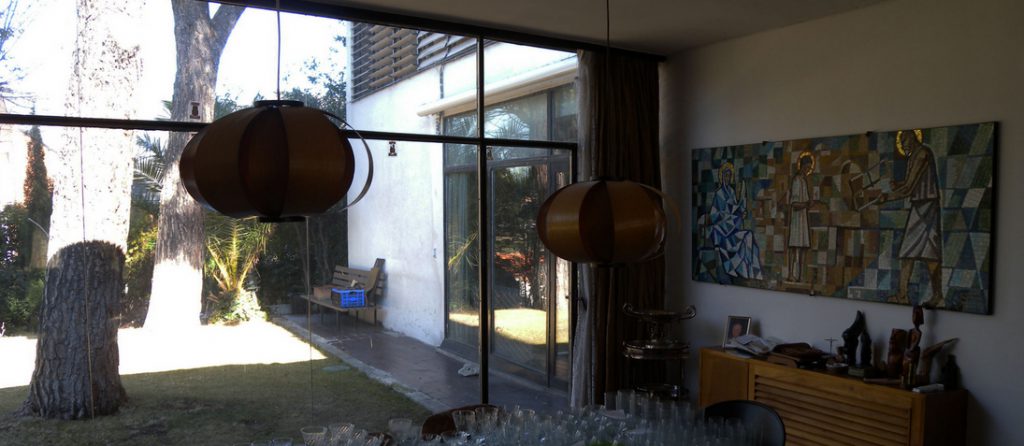The house of Vallet de Goytisolo is one of only three projects that the architect José Antonio Coderch executed in Madrid. Eclipsed by the greater media and academic repercussion of other works, such as the Girasol building, built in 1966 and considered one of the masterpieces of Spanish architecture, this small dwelling located in Ciudad Lineal has now only unfortunately acquired its name and presence. Recorded his order of demolition, this work runs the risk of thickening the list of absent architecture in Madrid. Leaving aside the romantic component that this term might evoke, the negligence, lack of sensitivity and culture of public and professional administrations may play an important role again. To date, it seems that the response has arrived on time and there are chances of stopping the demolition process.
La casa de Vallet de Goytisolo es uno de los tres únicos proyectos que el arquitecto José Antonio Coderch ejecutó en Madrid. Eclipsada por la mayor repercusión mediática y académica de otras obras, como el edificio Girasol, construido en 1966 y considerado sin fisuras una de las obras maestras de la arquitectura española, esta pequeña vivienda ubicada en Ciudad Lineal ha adquirido sólo ahora, lamentablemente, nombre y presencia. Registrada su orden de derribo, esta obra corre el peligro de pasar a engrosar la lista de arquitecturas ausentes en Madrid. Dejando de lado el componente romántico que este término pudiera evocar, la negligencia, falta de sensibilidad y de cultura de las administraciones públicas y profesionales pueden jugar de nuevo un papel fundamental. Hasta la fecha, parece que la respuesta ha llegado a tiempo y existen opciones de que se pueda detener el proceso de derribo.
La casa de Vallet de Goytisolo es uno de los tres únicos proyectos que el arquitecto José Antonio Coderch ejecutó en Madrid. Eclipsada por la mayor repercusión mediática y académica de otras obras, como el edificio Girasol, construido en 1966 y considerado sin fisuras una de las obras maestras de la arquitectura española, esta pequeña vivienda ubicada en Ciudad Lineal ha adquirido sólo ahora, lamentablemente, nombre y presencia. Registrada su orden de derribo, esta obra corre el peligro de pasar a engrosar la lista de arquitecturas ausentes en Madrid. Dejando de lado el componente romántico que este término pudiera evocar, la negligencia, falta de sensibilidad y de cultura de las administraciones públicas y profesionales pueden jugar de nuevo un papel fundamental. Hasta la fecha, parece que la respuesta ha llegado a tiempo y existen opciones de que se pueda detener el proceso de derribo.
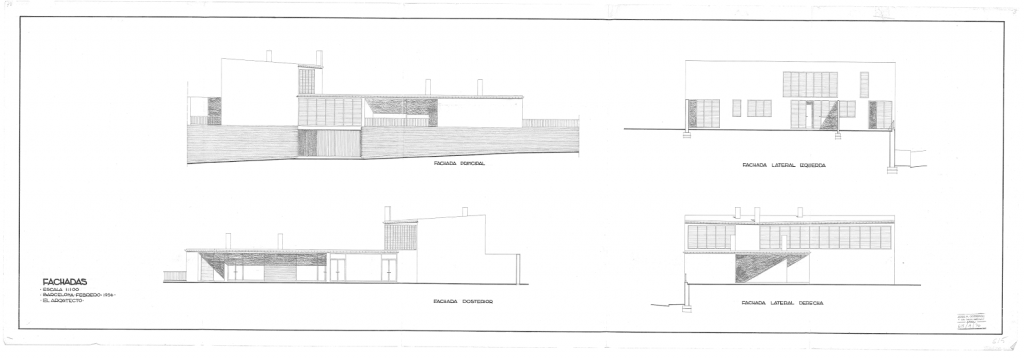 |
| Image courtesy of Coderch family |
 |
| Image courtesy of Coderch family |
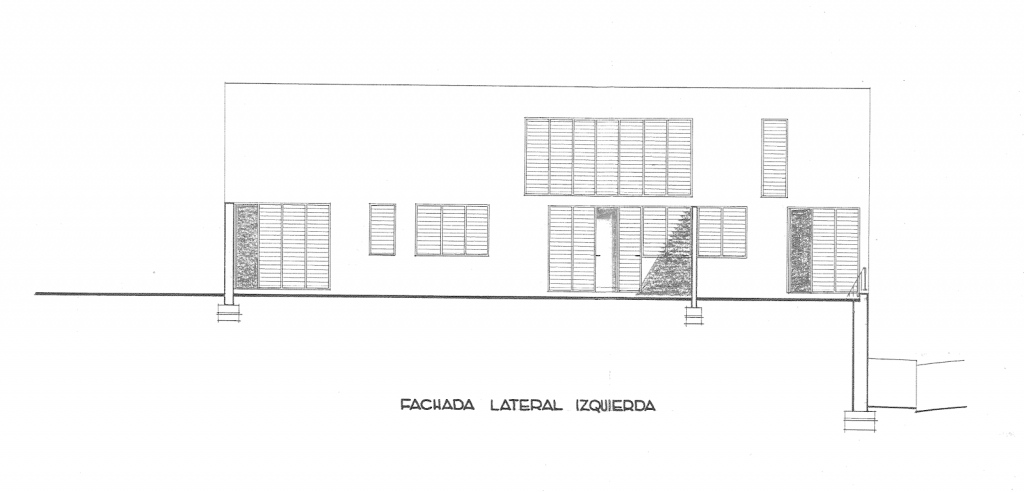 |
| Image courtesy of Coderch family |
 |
| Image courtesy of Coderch family |
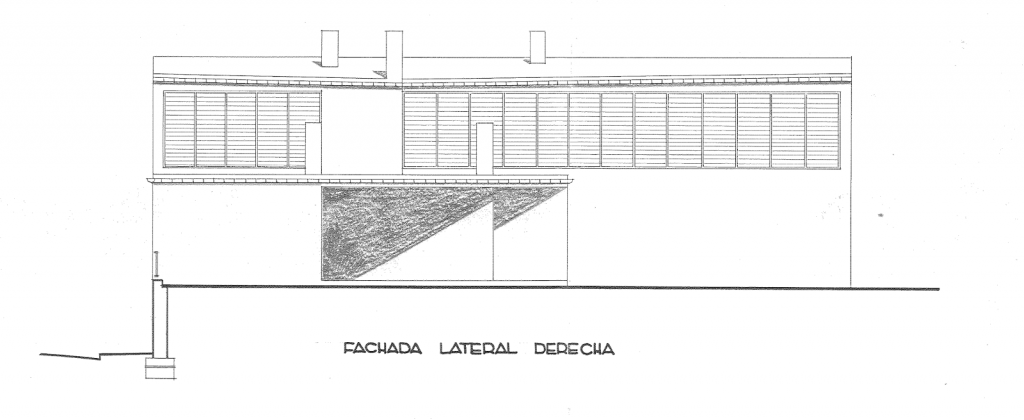 |
| Image courtesy of Coderch family |
The housing, arranged in an L-shaped layout around a patio, opening to the views of the Sierra del Guadarrama, is an evolution in the modern architecture of strong Mediterranean vernacular influences that up to that time Coderch had developed. This time the house is not in a singular context of great value, so that its layout will not be so open. Holding a more urban character, this house seems to turn its back to the street to build its own context, more friendly, in the interior. As a small bastion, it reproduces in some way the warm and friendly Mediterranean atmosphere in the center of the plateau.
La vivienda, dispuesta en un esquema en L en torno a un patio, abriéndose a las vistas de la Sierra del Guadarrama, supone una evolución en la arquitectura moderna de fuertes influencias vernáculas mediterráneas que hasta la fecha Coderch había desarrollado. En esta ocasión la vivienda no se encuentra en un contexto singular de gran valor, por lo que su trazado no será tan abierto. De un carácter más urbano, la vivienda parece dar la espalda a la calle para construir su propio contexto, más amable, en el interior. Como un pequeño bastión, reproduce algo del cálido y amable ambiente mediterráneo en el centro de la meseta.
La vivienda, dispuesta en un esquema en L en torno a un patio, abriéndose a las vistas de la Sierra del Guadarrama, supone una evolución en la arquitectura moderna de fuertes influencias vernáculas mediterráneas que hasta la fecha Coderch había desarrollado. En esta ocasión la vivienda no se encuentra en un contexto singular de gran valor, por lo que su trazado no será tan abierto. De un carácter más urbano, la vivienda parece dar la espalda a la calle para construir su propio contexto, más amable, en el interior. Como un pequeño bastión, reproduce algo del cálido y amable ambiente mediterráneo en el centro de la meseta.
As the architect Josep Llinas affirmed in his text Coderch, an ethical dimension, Jose Antonio Coderch always placed himself in an ethical position of opposition, or at least distancing himself, in the face of the swings of the academic and commercial worlds: “Traversed by the moral rigor of his person, the architecture disappears in what it has of form (added by the architect to the simple construction) that represents and the professional instruments are replaced, in the last instance, by an unshakeable respect for the truth and by the trust in values that are beyond architecture. In the tradition as a sum of knowledge accumulated by the experience with which it is built without the need of architects. In the common sense in front of the academic or bureaucratic , in front of the unfolding of erudition or culture … ”
Tal y como afirmaba el arquitecto Josep Llìnas en su texto Coderch, una dimensión ética, José Antonio Coderch se situó siempre en una posición ética de oposición, o al menos distanciamiento, frente a los vaivenes de los mundos académico y comercial: “atravesada por el incostentable rigor moral de su persona, desaparece la arquitectura en lo que tiene de forma (añadida por el arquitecto a la simple construcción) que representa y los instrumentos profesionales son sustituidos, en última instancia, por un inquebrantable respeto a la verdad y por la confianza en valores que están más allá de la arquitectura. En la tradicición en cuanto suma de conocimientos acumulados por la experiencia con los que se construye sin la necesidad de arquitecto. En el sentido común frente a lo académico o formulario, frente a los despligues de erudición o de cultura…”
Tal y como afirmaba el arquitecto Josep Llìnas en su texto Coderch, una dimensión ética, José Antonio Coderch se situó siempre en una posición ética de oposición, o al menos distanciamiento, frente a los vaivenes de los mundos académico y comercial: “atravesada por el incostentable rigor moral de su persona, desaparece la arquitectura en lo que tiene de forma (añadida por el arquitecto a la simple construcción) que representa y los instrumentos profesionales son sustituidos, en última instancia, por un inquebrantable respeto a la verdad y por la confianza en valores que están más allá de la arquitectura. En la tradicición en cuanto suma de conocimientos acumulados por la experiencia con los que se construye sin la necesidad de arquitecto. En el sentido común frente a lo académico o formulario, frente a los despligues de erudición o de cultura…”
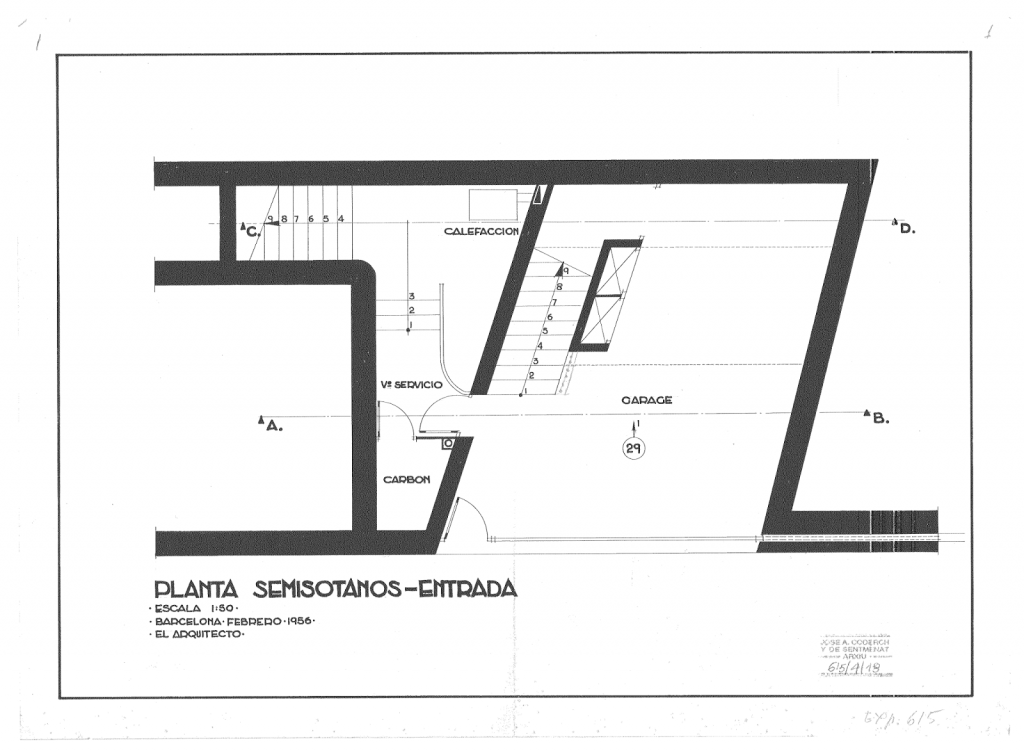 |
| Image courtesy of Coderch family |
 |
| Image courtesy of Coderch family |
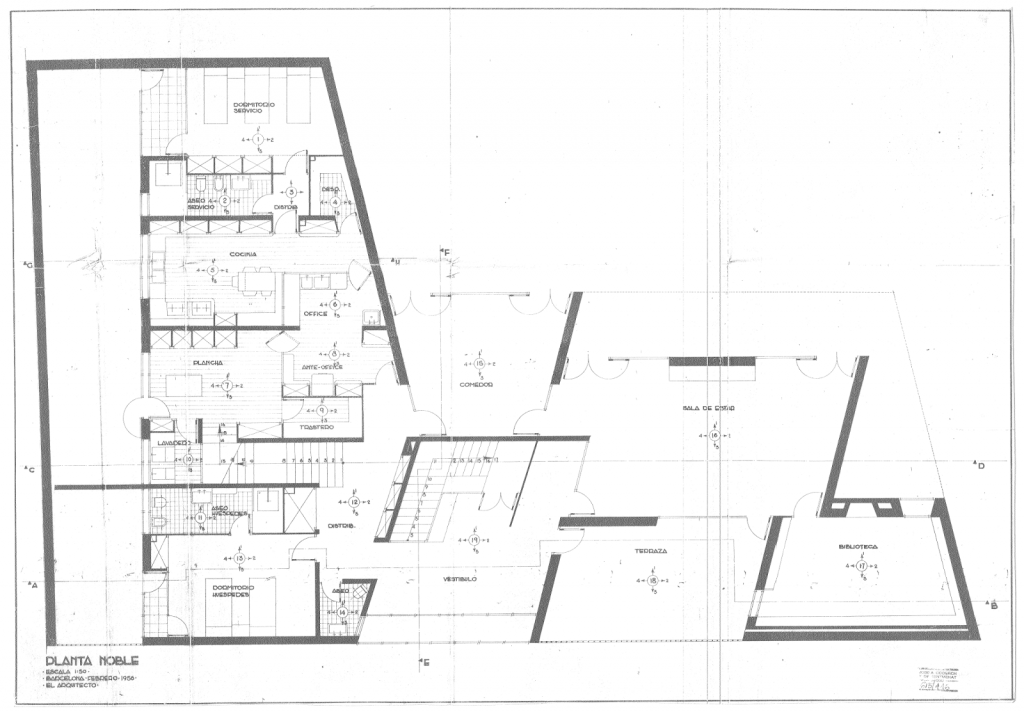 |
| Image courtesy of Coderch family |
Exhausted its value of use, considered only a value of change that pushes rather to the replacement, it is necessary the search a new paradigm in the relation between architectonic patrimony and society. Market and academia are always deployed in favor of novelty, of novelty which is nothing but reproduction of order, of survival, in favor of their interests and conventions. Considering this reality, how to face the inherited and lost with this unwavering need for a quick consumption and recycling of everything that identifies us?
Agotado su valor de uso, considerado tan sólo un valor de cambio que empuja más bien al recambio, es necesaria la búsqueda de un nuevo paradigma en la relación entre patrimonio arquitectónico y sociedad. Mercado y academia se despliegan siempre en favor de la novedad, de novedad que no es sino reproducción del orden, de su supervivencia, a favor de sus intereses y convenciones. Frente a esto, ¿cómo enfrentar lo heredado y deshauciado con esta inquebrantable necesidad de un rápido consumo y reciclaje de todo aquello que nos identifica?
Further information on:

